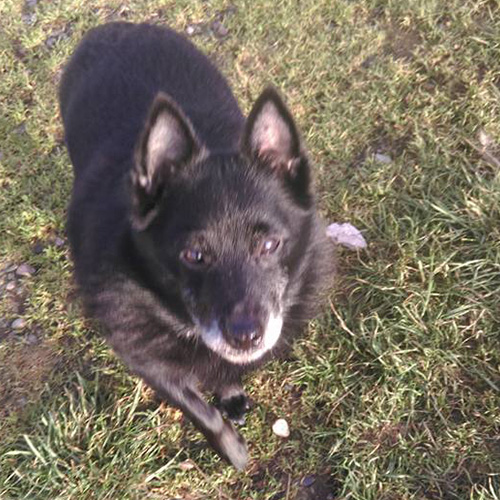
Old Schipperke
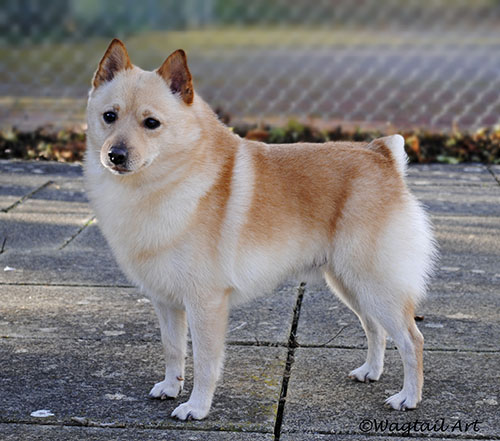
NBT cream male
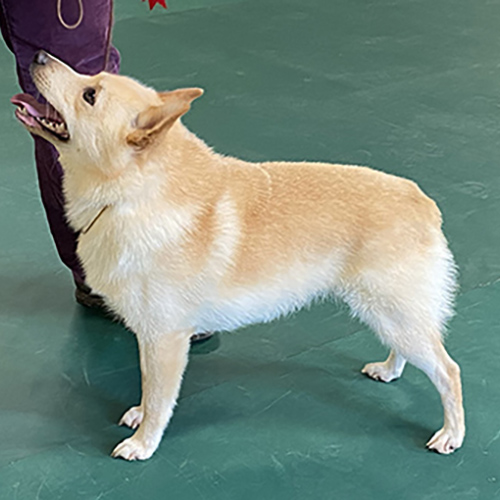
NBT cream male
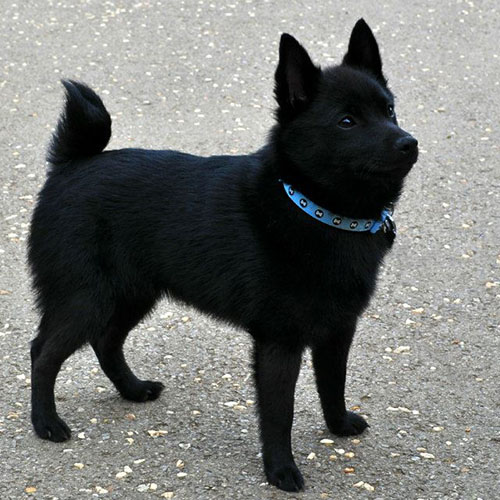
NBT black male
The Schipperke is a robust, hardy little dog with few health problems and very few conditions where there is a known or suspected hereditary component. Like all living creatures, Schips slow up with the years and can develop some of the ailments of old age, such as arthritis but it is not at all uncommon to find dogs living healthy, active lives well into their teens and even beyond.
In the last few years, the health of pure-bred dogs has been in the spotlight and the UK Kennel Club requested that each recognised breed appoint a health committee to examine health issues in the breed. The Schipperke Club appointed Karen Brooks to act as the named health co-ordinator and chair of this committee and health matters are now discussed at every meeting of the Club’s full committee.
In common with every breed, the Health Committee had two initial tasks from the Kennel Club; to scrutinise the Schipperke Breed Standard in order to ensure that it did not call for any feature which might affect health adversely and to nominate the three health conditions most commonly encountered in Schipperkes.
After deliberation, the Health Committee concluded that the Standard did not specify any feature which might compromise health or lead to exaggerations in conformation. The Schipperke is a “natural” canine shape and there was no evidence of health risk stemming from the dog’s basic structure as demanded by the Standard. In the event, the Kennel Club made one minor change and the Standard now describes the hindquarters as “lighter” than the forequarters as opposed to the original “finer”.
Three health conditions were initially specified, MPSIIIB, epilepsy and Legg Calve Perthes Disease, although it must be stressed that none of these conditions is by any means prevalent in the breed.
Since then two more health conditions have come to the fore and Schipperke owners are now being encouraged to test for them these are VON WILLEBRAND DISEASE TYPE 1 (vWD1) and Brachyury, – (Bobtail mutation).
Click title below for more information.ore information on all these health conditions.
MPSIIIB is a serious degenerative disease affecting the neurological system. It usually manifests itself between the ages of 2 – 4 years with early symptoms of muscle weakness, tremor and loss of co-ordination. There is no effective treatment and affected dogs are usually put to sleep before they become incapacitated. At present, there have been no cases of affected animals in this country but dogs carrying the mutated gene for the condition have been identified here after testing via mouth swabs or blood samples.
An article by Dr J. Sampson on breeding to ensure that this disease is not perpetuated, appears elsewhere in this section of our web-site. The Club’s Code of Ethics has now been amended to require breeders to test stock for MPSIIIB before mating and an open register of test results has now been set up and maintained on the Club web-site. With care, co-operation and openness, it is entirely possible that the threat of this condition can be eradicated from UK Schips in the foreseeable future.
For more detailed information on MPSIIIB and testing, see www.bonchien.com/MPSIIIB.html .
Brachyury, – (Bobtail mutation).
The bobtail mutation is a dominate trait.
The Bobtail mutation is a naturally occurring dominant inherited mutation in the T-box gene. This can result in partial full tail (tip missing) through varying lengths, short tail (being only a few inches in length) to tailless (no discernible vertebrae). The length of the bobtail is variable and under the influence of other, as yet undetermined, genetic factors that cause some natural bobtail individuals to have nearly full-length tails while others may have virtually no tail. Both sexes can inherit the mutated T-box gene. Only one of the mutated T-box genes is needed to produce bobtails.
In the 23 breeds in which natural bobtails were found, 17 had bobtails caused by this T-box mutation. These included the Australian Shepherd, Brittany, Karelian Bear Dog, Polish Lowland Sheepdog, Pyrenean Shepherd, Schipperke, Swedish Vallhund and Russell Terrier. In each of the dogs of these breeds with natural bobtails, one (and only one) copy of the T-box gene was found. These findings indicate that the bobtail mutation acts as a dominate trait and suggests that having two copies of the T-box gene is lethal.
Mating of Bobtail Dogs.
Clear to Clear Mating :- The mating of two individuals with no inherited T-box gene will produce offspring with no T-box gene. They will most likely produce normal tails, although other genetic factors could affect tail length.
Clear to T-box Mating :- The mating of a T-box clear dog to a dog with the inherited T-box gene mutation could produce offspring with natural bobtails as there is a 50% chance of passing the T-box mutation to offspring. This mating is expected to produce 50% of puppies with natural bobtails, 25% of puppies with normal tails and 25% of puppies with embryonic lethal (T-box/T-box) genotype (an expected 25% reduction in litter size)
T-box to T-box Mating :- This mating is expected to terminate embryo development in the womb (embryonic lethal) leading to the bitch re-absorbing the embryos. If a puppy with two T-box/T-box genes should be born alive, it may display severe development defects, including spinal deformities that are incompatible with life. These puppies will not live long after birth.
The mating of a dog with the T-box gene to a dog with the T-box gene should never be attempted.
It is strongly suggested therefore, that dogs should be tested for the T-box mutation prior to mating to eliminate the possibility of a T-box/T-box (embryonic lethal) pregnancy.
The T-box gene test enables breeders to identify if a dog is docked or has a natural Bobtail thus preventing a T-box to T-box mating. Untested dogs should not be used by any breeders planning litters.
This test is now recognised by the Kennel Club UK and will be registered on their Breed Health Finder and in the Breed Record Supplement. Breeders should also submit their test results to be added to the T-box test register on the Club website to give breeders the chance to avoid a T-box/T-box mating.
Von Willebrand Disease is the most common inherited bleeding disorder of both humans and dogs. It is caused by deficiency in the amount of a specific protein needed to help platelets (the blood cells used in clotting) stick together and form clots to seal broken blood vessels. The deficient protein is called Von Willebrand Factor (vWF). The disorder occurs in varying degrees of severity ranging from trivial bleeding to excessive life threatening haemorrhages. vWD Type1 is a much milder condition than vWD Type2 and Type 3 which are both more severe than Type1.
Symptoms include:- Spontaneous bleeding from the nose, gums and other mucous membranes, excessive bleeding after an injury, trauma or surgery. Often dogs don’t show signs until something starts the bleeding such as nail trimming, teething, spaying, sterilizing, tail docking or other causes. Bleeding can also occur internally in the stomach, intestines, urinary tract, the genitals and / or into the joints’
Genetically Clear Dogs:- vWD Type1 is transmitted as a dominant trait. This means that a dog that is genetically clear has two copies of the normal gene (N/N), will not develop vWD Type1 and will not pass it on to its offspring.
Carrier Dogs:- Carrier dogs carrying one copy of the vWDType1 gene along with a normal copy of the gene (vWF/N) will have bleeding tendency. These carrier dogs will pass the abnormal vWF gene to their offspring with a probability of 50% of the litter having the abnormal gene. The trait is called incomplete dominance because carrier dogs may not develop the disorder at all but they will still pass the abnormal gene to their offspring. Because it is very uncommon for carriers to show symptoms of vWD Type1 this condition is treated as Recessive.
Affected Dogs:- Affected dogs will have vWDType1 and show clinical signs of the disorder. Affected dogs can be treated should excessive bleeding occur. However it should be noted that, should severe bleeding occur that does not respond to treatment then the outcome will be the death of the dog.
Genetic testing makes it possible to identify whether a dog is clear, carrier of affected. This is vital to eliminate this condition from our breed. The DNA test can identify the responsible vWF gene directly.This DNA test can be done at any age and classifies dogs into affected, carrier and clear. Breeders and owners
should view vWD Type1 as a significant health risk and should strive to get rid of the vWD Type1 mutated gene. The discovery of the mutation, and the DNA test, now provides the opportunity to do just that.
It is strongly suggested that anyone wanting to produce a litter should use dogs that are DNA tested clear. Carrier dogs should not be omitted from breeding as long as the other breeding dog has been DNA tested clear.
Untested dogs should never be used in breeding programmes.
EPILEPSY in varying degrees of severity is found in Schipperkes from time to time. As in humans, there is thought to be a hereditary element in at least some forms of epilepsy but at present, the pattern of transmission is unclear. A longitudinal study on epilepsy in Schips is currently underway at the University of Finland in Helsinki and the UK Club has been involved in providing buccal swabs and some blood samples from our dogs. It will be some time before a report is published but ultimately, any findings will be reproduced on this web-site. Dogs affected by epilepsy can, if the condition is not severe, be treated with anti-convulsant medication and with careful management, can live a relatively normal life. Again, it must be stressed that this disease appears to affect only a very small percentage of Schips.
LEGG CALVE PERTHES DISEASE is primarily seen in smaller breeds of dog and is a disease of the hip joint which results in deformity of the ball of the joint. Most affected dogs show symptoms of pain and lameness before their first birthday and if untreated, increasingly severe inflammation and arthritis are likely to result. Surgery to remove the head and neck of the femur [the longer leg bone] is the only effective treatment and the prognosis is good provided that rehabilitative therapy is followed. At present, the causes of this ailment are not fully understood but it is suspected that heredity may well play a part. Dogs’ hips can be x-rayed under anaesthetic or sedation after the age of approximately 9 months to check for irregularities or inflammation which may be indications that the disease is present No animal found to be suffering from this illness should be used in breeding.
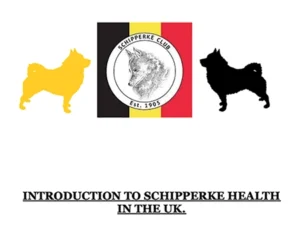
In 2009, the Schipperke Club conducted a survey of breed health by means of a questionnaire sent to all UK Club members. The response rate was disappointing, less than 20%. A second short survey was carried out in 2014 but sadly, this had an even poorer response rate. Nevertheless, despite the limitations of these two exercises, the picture of a healthy little breed was largely confirmed.
The Kennel Club web-site [www. thekennelclub.org.uk] lists on its “health test” section all individual test results received and recorded by the Kennel Club from a British Veterinary Association / Kennel Club Health Scheme or an official Kennel Club DNA testing scheme. In addition, the Breed Watch section of the web-site identifies any points of concern on health matters in specific breeds. No points of concern are currently listed for Schipperkes.
The Club has a code of ethics which follows the blue-print issued to all breed clubs by the Kennel Club. The purpose of the code is to ensure that all breeders and owners strive for the highest standards of care and husbandry at all times.
If you have concerns about any aspect of the health of this breed which you consider should be brought to the attention of the Health Committee or require more information on any health matter, please feel free to contact the Health Co-ordinator.
KAREN BROOKS
EMAIL: petkargsd@yahoo.co.uk